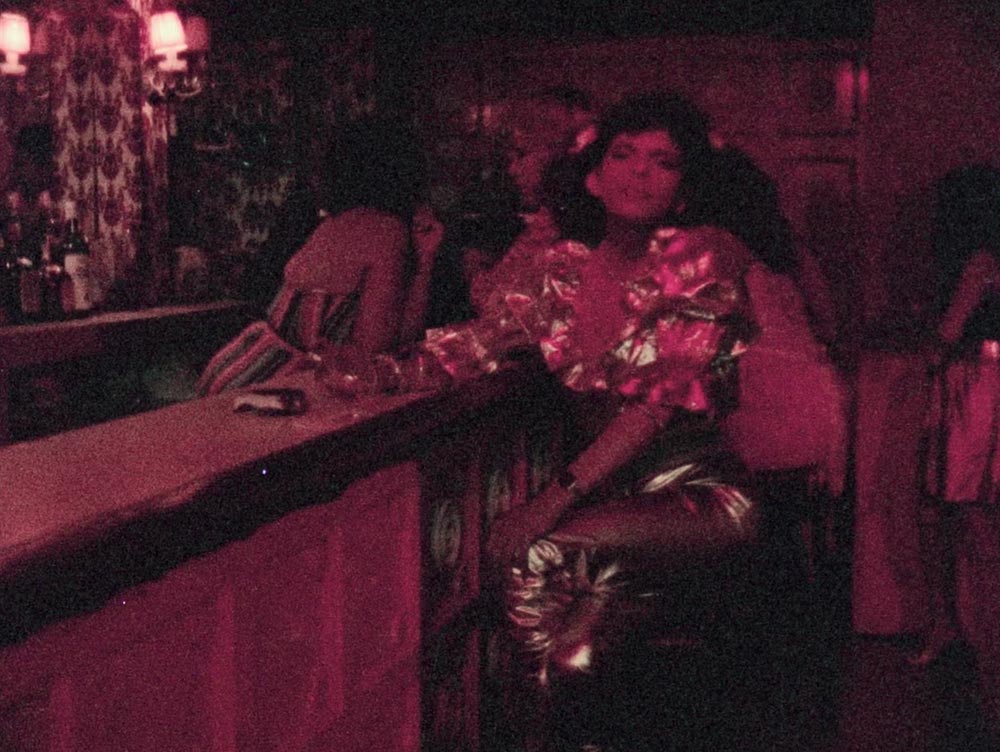The late 1970s and early-to-mid 1980s saw something of a small global wave of documentaries exploring the growing visibility of transness in public life. While some of these films have remained easily accessible over the years, many others, like the excellent Australian documentary Man Into Woman: The Transsexual Experience (1983) and the French Et il voulut être une femme (1981) have drifted into deep obscurity. Even worse, some were always obscure to begin with. Running now through January 25th at the Institute for Studies on Latin American Art (ISLAA), Dueñas de la Noche: Trans Lives and Dreams in 1980s Caracas takes an exploded view of one of the most elusive of these films: the Venezuelan filmmakers Manuel Herreros de Lemos and Mateo Manaure Arilla's documentary short Trans (1982).
Produced over the course of a year and only ever screened a handful of times at the Cinemateca Nacional de Venezuela, an art gallery, and a porn theater, Trans is a short portrait of a diverse group of transformistas living and trying to get by in Caracas. Despite largely being made in geographic isolation (and, with the exception of Doris Wishman's 1977 film Let Me Die a Woman and its earlier 1972 incarnation, StrangeHer: Adam or Eve, little-to-no international distribution), trans documentaries from the past often unintentionally feature similar structures and motifs, creating a sort of shared trans visual language. We see that reflected here in the film's lovingly intimate scenes of trans women speaking of their dreams and hopes for the future while doing their hair and makeup, performing in nightclubs for cis audiences, and running away from the cops while walking the streets at night. Like many of those films, Trans also gives space to medical, religious, and government figures to speak about the evils of transness and the threat that it poses to society. But while many other filmmakers allowed these sorts of statements to go unchallenged in their films, Lemos and Arilla literally drown them out with music in what accounts for a genuinely radical act of solidarity that’s only underlined by the film’s—I’m sorry—euphoric closing sequence shot at the Plaza Venezuela fountain. Despite only running 22 minutes, Trans feels every bit as essential as its feature-length counterparts: Dressed in Blue (1983), Hookers on Davie (1984), and Paris is Burning (1990).
Presented alongside a new digital restoration of the film are a selection of the few remaining traces of its production: the photographs that the filmmakers took to secure the participation of its subjects, the original paste-ups for its title cards, and clippings and program notes from its 1982 Cinemateca premiere, which ended with the police attempting to arrest the filmmakers and the two dozen trans women in the audience. This sort of scattered ephemera represents all that’s known to exist for a great deal of other lost trans and queer films. That all extant 16mm release prints of Trans have been destroyed by the archives that held them and all but one of its subjects have since passed away from AIDS-related causes, suicide, or murder, makes seeing these physical reminders of the precarity of both the film and the lives it documented—and the new life given to them through the film’s restoration from clearly deteriorating original elements—all the more powerful.
Trans is on view through January 25, 2025 at ISLAA.



